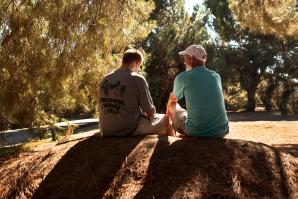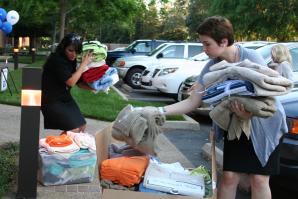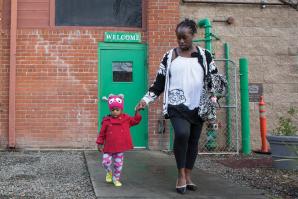A report was made to Child Protective Services about our young nephew, claiming an abusive environment created by neglect due to my sister-in-law’s drug addiction. My sister-in-law is obviously very upset, and doesn’t know what to do. We’ve never been through anything like this; what should we expect?
There are many paths this type of case can take, depending on the situation. The steps and timelines may vary widely in each case.
The California Welfare and Institutions Code set in place a system to protect children who suffer or are at risk of suffering harm due to abuse or neglect caused or not prevented by their parent, guardian, or other household member. W&I § 300 provides a detailed list of the children for whom these service are provided.
The first step is an investigation into the report. If the reporter indicated that your nephew is in immediate danger, the investigator must make an in-person response within 24 hours. If the child is not reported to be in immediate danger, the investigator’s in-person response must occur within 10 days. The purpose is to assess the child’s safety and determine if the child can safely remain in the custody of the parents. If the social worker determines that the child is in immediate danger, the child will be placed in the care of a relative, non-related extended family member or a foster home.
In many cases, the investigation reveals that the child may safely remain in the home, but that child welfare services are necessary to ensure the continued safety of the child. In these situations, the social worker may refer the family to a variety of social services (such as parenting classes, therapy, or public assistance) or offer voluntary child welfare services.
If your nephew is removed is removed from his home, the social worker must file a petition with the court asking to have the child made a dependent of the court. A hearing on this petition will be held as soon as possible, typically the either the same day or the next court day. At this detention hearing, the judge will review the investigator’s report and decide if the child’s safety requires that he or she be removed from the home until further court proceedings are held regarding the allegations against your sister-in-law.
If the court detains the child, another hearing, called the jurisdiction hearing, is held. This hearing occurs within 15 days (usually sooner), and is used to decide if there is sufficient evidence to show that your nephew is in danger per W&I § 300 guidelines. Your sister-in-law has the right to attend this trial and to present evidence. If the court finds that the allegations are false, the case will be dismissed and your nephew can return home. If the court finds the allegations to be true, the case will move to a disposition hearing. This may take place the same day, or at any time within 10 days after the jurisdiction hearing.
The court will make orders such as whether the child will become a dependent of the court or returned home. If the child is not returned home, the court will determine who will take custody.
If your nephew is placed out of the home, the court must review the case at least once every six months. The information gathered during review will be used to determine if he may return home or remain in his current placement.
Within 12 months after a child is removed from their parents’ home, a permanency hearing must be held to determine if the child can be safely returned home, or if the reunification plan should be terminated. A hearing will be held every six months to update the court on the child’s progress and needs, until the child is adopted, a legal guardianship is established, or the case is dismissed for some reason.
Your sister-in-law may benefit from several excellent resources available from the California Courts Self-Help website, the Sacramento Dependency Court’s website and the Sacramento County Protective Custody Information Sheet. Relatives interested in making a permanent home for the child may also want to consult the California Department of Social Services’ pamphlet, Giving a Child a Permanent Home: Choices for Relatives. A very detailed guide, intended for attorneys representing parents and children in dependency cases, is also available online.
Do you have a question for the County Law Librarian? Just email comstocks@saclaw.org.
Sick of missing out? Sign up for our weekly newsletter highlighting our most popular content.
Recommended For You

Seen & Not Heard
Child advocates could fundamentally shift foster care outcomes, if only there were more volunteers
Over half a million kids live in foster care in the U.S. as a result of abuse, neglect or abandonment. Because they can’t advocate for themselves, many become victims a second time, lost in an overburdened child welfare system that can’t pay close attention to each child. But one program is drastically improving outcomes for foster youth, despite the overwhelming odds.

Fostering Futures
Women in Philanthropy helps foster youth transition to adulthood
Women in Philanthropy, a program of the United Way California Capital Region, supports foster teens in the community who are turning 18 and facing emancipation. The group coordinates workshops and social programs and organizes a holiday stocking and gift event. Last year, volunteers collected nearly 500 towel sets and 50 luggage sets, along with toiletries and household goods to give to those making the transition to independence.

Under One Roof
Can rapid rehousing save local homeless families from life on the streets and in shelters?
Though a new rapid rehousing initiative may stymy the troubling trend locally, some providers remain concerned that a lack of mandatory supportive services and intensive case management may cause the program to exacerbate, not eliminate, the problem.

Making Cents
Preparing foster youth for their financial future.
For many foster youth, establishing stability within in the foster care system is exceedingly difficult. But it’s after emancipation that the realities of financial independence become even more challenging.



